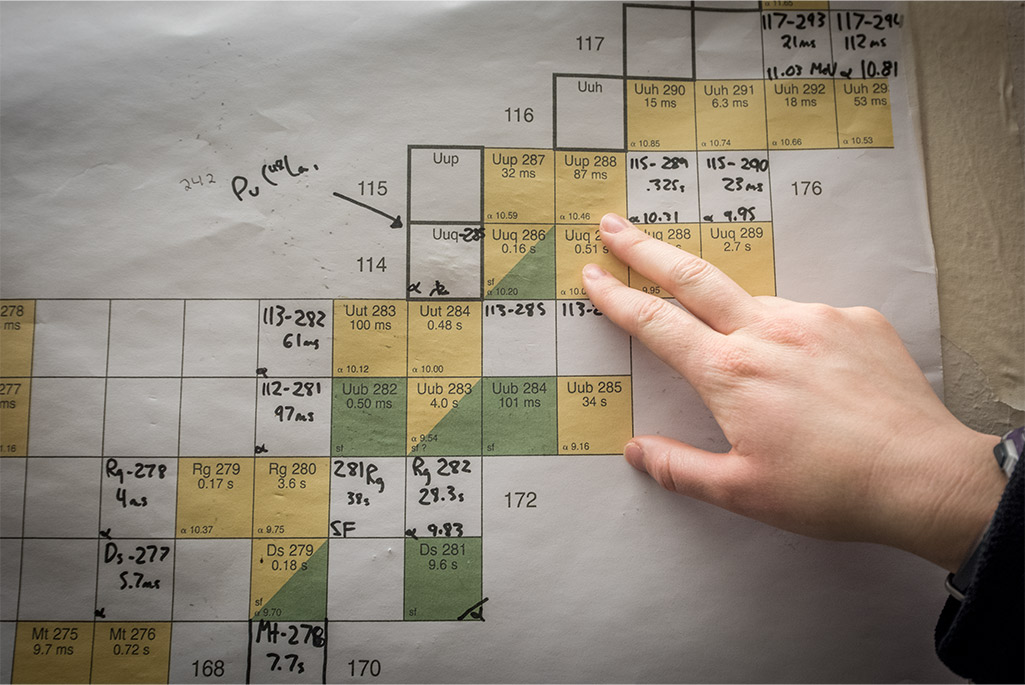Scientists at Berkeley Lab have already helped discover 16 of the 118 known elements. Now they’re in the early stages of potentially hunting for yet another: element 120.
“We are embarking on a very exciting but challenging project,” said Reiner Kruecken, the director of the Nuclear Science Division. “Making superheavy elements is incredibly difficult, and we still have to do critical work to ensure that all technical aspects work – and demonstrate a key stepping stone on the way to attempt the discovery of element 120.”
This work includes producing a particle beam of the right intensity, making the challenging target for the beam to interact with, and testing whether the reaction is likely to produce the desired element.
The plan to hunt superheavy elements using Berkeley Lab’s unique facilities is included in the 2023 Long-Range Plan for Nuclear Science released by the Nuclear Science Advisory Committee on Oct. 4 and was highlighted in a recent article in Chemistry World. Studying elements at the extremes can provide insights into how atoms behave, test models of nuclear physics, and map out the limits of atomic nuclei.
Element 120 is of interest not only because it would be the heaviest element ever discovered and the first on the eighth row of the periodic table. It could also fall within the hinted “island of stability,” a range of superheavy elements that might be long-lived. Typical superheavy elements decay almost instantaneously, but the right combination of protons and neutrons could make a more stable nucleus that scientists can better study.
Later this year, an international collaboration including many U.S. institutions led by scientists from the low-energy program at Berkeley Lab will take the next crucial step. They’ll use the 88-Inch Cyclotron to test whether bombarding a target with a beam of the isotope titanium-50 (a less common variation of titanium with a specific number of neutrons) will create known superheavy element 116 – a reaction that has never been demonstrated before.
“That itself would be a huge breakthrough,” Kruecken said. “If we can demonstrate that, only then will we embark on trying to make element 120.”
To create element 120, researchers have proposed colliding titanium-50 with a target made of the isotope californium-249. The cyclotron would provide an intense particle beam to the Berkeley Gas-filled Separator, which can isolate and identify individual atoms of superheavy elements. The experiment would have to run for several years to reach the sensitivity needed to produce and detect one or more atoms of element 120. Stay tuned for future news on the progress in this endeavor.
